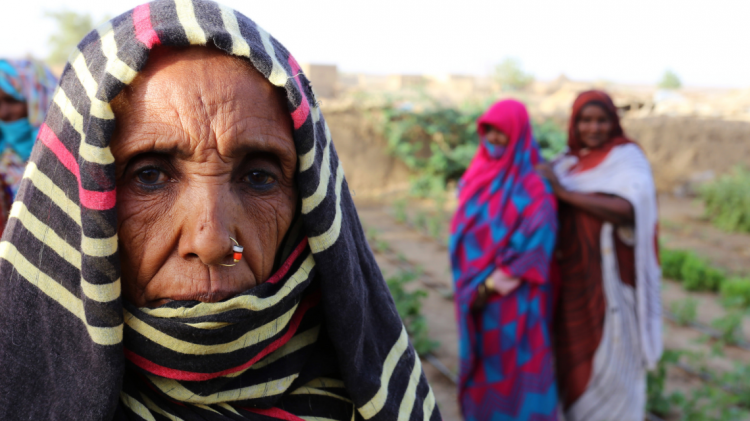In eastern Sudan under the blistering sun, women covered colourfully head-to-toe chatter away as they harvest lush green vegetables to feed their families, their neighbours and their wallets. Their fields thrive among long stretches of parched earth because nuclear science has helped them to make the most of limited water supplies and optimize fertilizer use.
“We used to have nothing. We had little food, and we had to buy it at the market. We did not even know how vegetables were grown,” said Fatima Ismail, a farmer from a small village outside of Kassala where an IAEA-supported drip irrigation project has been ongoing since 2015. “We now know how to deal with the soil and how to grow our own food. We are very eager to expand and to have all of our neighbours and other women in the village use this method, too.”
These hundreds of women have been living constrained lives with few opportunities for change. They and their families, many of whom are refugees or internally displaced, had limited food resources and relied on their husbands’ meagre income. While their husbands are allowed to work, the women did not have an option to grow their own food or leave their homes to work and earn a living. Due to the cost of buying food, sometimes at prohibitive prices, particularly during the off season, many people in these villages are malnourished. (Watch video: How Nuclear Technology Helps Women Farmers in Sudan Move Out of Poverty)
Now, through small-scale farms and home gardens optimized using nuclear science and technology, the women, their families and entire villages benefit from access to all sorts of vegetables, from onions and eggplants to okra and leafy greens.
Agriculture is the primary source of income and livelihood for up to 80% of the population in Sudan.
“Before this, my child suffered from malnutrition, and I had to take him to the doctor very often,” said Haleema Ali Farage, another woman farmer participating in the project. “Now with more food and more nutrition from the vegetables, he has not gone to the doctor for months.”
Science was the starting point of a new change for these women. Thanks to a project funded in part through the Peaceful Uses Initiative (PUI), local scientists from the Agricultural Research Cooperation (ARC) were trained and provided technical support by experts from the IAEA, in partnership with the Food and Agriculture Organization of the United Nations (FAO). The scientists learned to use the soil moisture neutron probe technique to measure and determine moisture levels in their soil at Kassala Research Farm; to quantify the amount of water needed by the crops; and to use the nitrogen-15 isotopic technique (15N) to optimize nitrogen fertilizer applications (see Soil moisture neutron probe and nitrogen tracking). These scientific studies then formed the basis to determine how much water and fertilizer to deliver through the watering system known as drip irrigation.
“Studying the atoms in soil, water, fertilizer and crops is a very precise way to determine what works and what doesn’t. It helps us strike that fine balance between protecting soil and saving as much water as possible while still allowing crops to flourish,” said Lee Heng, Head of the Soil and Water Management and Crop Nutrition section of the Joint FAO/IAEA Division of Nuclear Techniques in Food and Agriculture.
If the women are empowered, they can share in the decision-making in the family and the community. It helps to reduce poverty, and it makes future planning more effective. When women are empowered, the community is more empowered.








